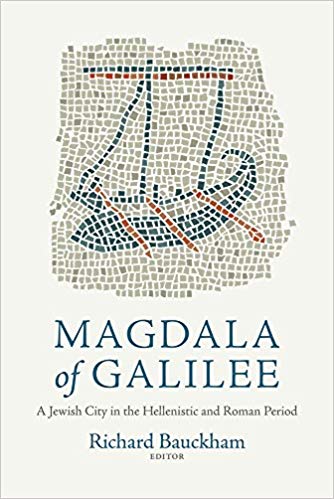Hardcover: 460 pages
Publisher: Baylor University Press (October 15, 2018)
Language: English
ISBN-10: 1481302930
ISBN-13: 978-1481302937
$80.00 hardcover
If you are a reader of BAR (Biblical Archaeology Review), or a contributor to the magazine, as I am, you will know that archaeology is on the one hand a science, and on the other hand an art, an art that involves piecing together
fragmentary evidence and drawing conclusions about all kinds of issues— chronology, provenance, culture, history, people groups, belief systems, religion… you name it. Most archaeological digs in the Biblical world help us in the main by filling in the picture of the context of Biblical narratives and claims. Only rarely is their archaeological evidence that provides confirmation of the existence of some person or claim or event mentioned in the Bible, but it does happen from time to time. Importantly, I don’t know of any archaeological hard evidence that confutes the actual claims the New Testament makes about various things. Here I am limiting my remarks to what the NT claims about things. The relationship between the OT and archaeology is a much bigger and more complex subject, and it is beyond the scope of my expertise to make claims about that.
There is now an exciting new book published last Fall by Baylor Press on the various digs at the Biblical site
by the sea of Galilee known as Magdala. While Richard Bauckham is listed as the editor of the volume, he is also overwhelmingly the main contributor to the volume, though various of his chapters are informed by the archaeological reports of those actually involved in the digs themselves. There are some seven chapters in whole or part written by archaeologists, and then there are five chapters written just by Richard, and they make up the majority of the book. The fascinating and groundbreaking chapter on the fishing industry at the sea of Galilee is some 80+ pages long, and readers of the NT will find this chapter especially helpful. In fact, this chapter alone makes the book well worth the purchase, and in my opinion this whole volume should be nominated for archaeological book of the year in the BAR poll of things. Richard is very measured and careful in his approach to the evidence unearthed at
Magdala, and is quite frank when the evidence is too partial to draw firm conclusions. Indeed, the book is rather
intentionally meant to convey the sense of the dig being ‘a work in progress’ so there is no final chapter drawing dramatic conclusions. Sometimes the evidence is elusive, sometimes allusive, and sometimes reasonably clear. Such is the nature of the work of archaeology.
In the coming posts, I will be having a conversation with by friend Richard about the book.













